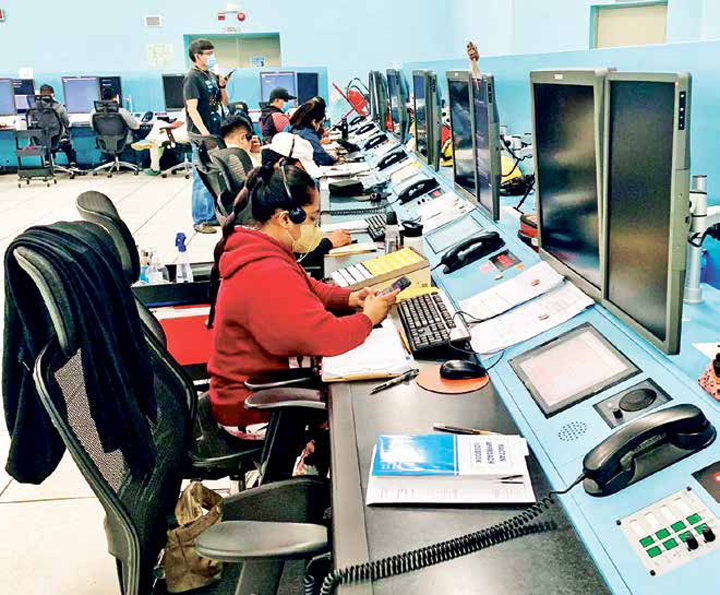
A REPEAT of the New Year’s Day fiasco—when technical issues partially paralyzed the Ninoy Aquino International Airport (Naia), disrupting 285 flights and affecting 56,000 passengers just for Sunday—could be prevented by a proper maintenance of resources as well as “meticulous” experts in government leadership.
For Cebu Pacific Spokesman Carmina Romero it is imperative for the government to invest in the maintenance of the Communications, Navigation, and Surveillance/Air Traffic Management (CNS/ATM) System to prevent the same mishap from happening.
“Any investment in technology requires regular upkeep and maintenance which includes software update, hardware improvement and redundant systems to ensure consistent use. Like in aircraft, we always buy new models so there will be less issues in the operation of older models,” she said.
AirAsia Philippines Spokesman Carlo Carongoy, meanwhile, recommended that experts be deployed, especially in the aviation industry.
“The aviation industry truly requires a lot of meticulous eyes, ears and hands in ensuring that fail-safe systems are in place. While we trust the initiatives of our government partners, this event also reminded us in the private sector to quickly put into practice our business continuity processes,” he said.
Cielo Villaluna, the spokesperson of Philippine Airlines (PAL), declined to provide a recommendation, pending the investigation by the Civil Aviation Authority of the Philippines (Caap) of the root cause of the problem.
“This is a vital first step that will lead to the further enhancement of the country’s air traffic management system,” she said.
To recall, Naia was paralyzed for a quarter of a day on New Year’s Day after the CNS/ATM—or in layman’s terms, the radar system—of Naia failed due to a problem with its electrical network as well as its supposedly “uninterruptible power supply.”
This caused hundreds of flights to be canceled, delayed, and diverted. It also caused a spillover effect on operations until Tuesday, as airlines had to mount recovery flights to accommodate those who were affected by the temporary shutdown of the Philippines’ main airport.
For local airlines, the paralysis affected almost 70,000 passengers over the last three days: 37,831 passengers for Cebu Pacific, 24,000 for PAL, and 8,000 for AirAsia Philippines.
“While we still see minor flight delays in our flights due to air traffic congestion, we expect our operations to normalize within the next 48 to 72 hours. Today, January 3, 2023, we mounted 12 recovery flights using our spare aircraft to service our guests affected by the domino effect brought about by the air traffic congestion,” Carongoy said.
Villaluna noted that PAL is “now transitioning into our normal flight operations.”
“We mounted replacement flights and extra-sector flights to accommodate stranded passengers. We accommodated affected passengers on the next available flights. As we worked with, and coordinated with aviation authorities to, our Operations Group was able to mount extra sector flights, replacement flights and re-accomodate passengers on the next available flights,” she said.
‘Sue Caap’
Meanwhile, commuter network The Passenger Forum encouraged passengers of affected flights to file for damages against the Caap.
“This is probably the worst New Year for Filipino air passengers. Instead of going back happy from festivities and family gatherings, they were greeted with flight delays and cancellations. Worse, as airlines are not to blame, they cannot get any compensation,” TPF Convener Primo Morillo said.
Morillo explained that the country’s Air Passenger Bill of Rights, a joint administrative order of the Department of Transportation and the Department of Trade and Industry issued in 2012, only provides compensation when airlines are at fault.
“With this airport glitch, we cannot blame anyone but the government institutions in charge of ensuring the smooth operations of air traffic in the country. As the Caap is a GOCC [government-owned and controlled corporation], they have their own funds and thus, they must pay for the damages incurred by their shortcomings,” Morillo said.
He noted that the cancellations and delays meant more expenses for ordinary travelers.
“Overly delayed and cancelled flights result to cancelled events. It also means additional nights of hotel accommodation, food and other expenses. These are clearly things that demand damages,” Morillo said.
The DOTr was sought for more information and comments on issues raised, but it has yet to reply to the BusinessMirror’s queries as of press time.
Image credits: CAAP
